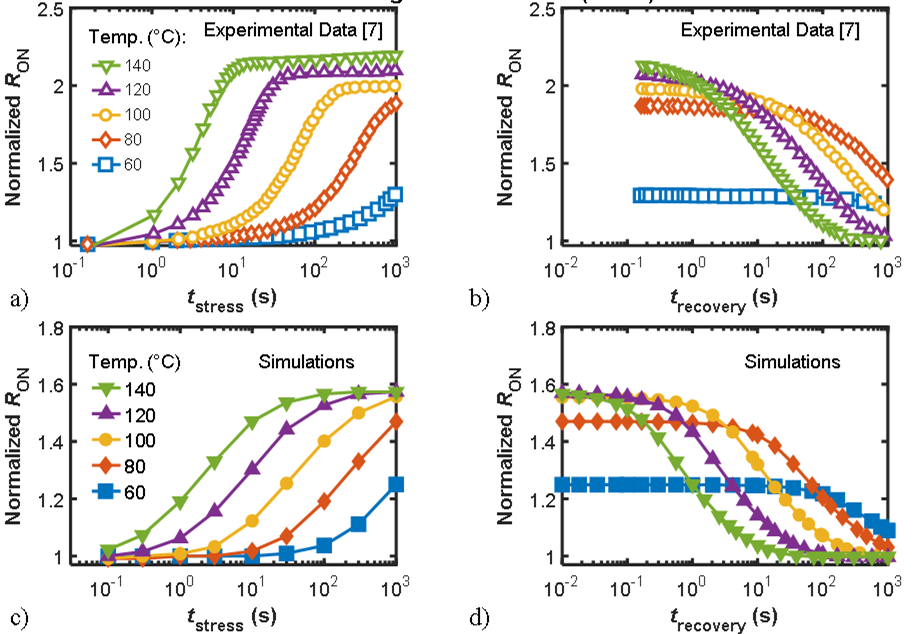Carbon doping in AlGaN/GaN power HEMTs is conventionally adopted to reduce buffer leakage and increase breakdown voltage. Unfortunately, C doping introduces acceptor-like traps in the buffer that cause on-resistance (RON) dispersion. Basically, this translates to a lower conductivity and slower speed of the device as a consequence of OFF/ON switching (and vice-versa).

The “hole redistribution” model – published on the IEEE Transactions on Electron Devices – explains the RON increase/decrease during stress/recovery tests at different temperatures with the following process. During stress, compare panel a and b in Figure 1, C-related traps emit holes to GaN valence band (which is accelerated by temperature) that then drift in the buffer away from the channel, thus leaving behind negatively ionized traps that reduce the electron concentration in the channel (i.e., increase RON). During recovery (i.e., the process after removing the applied stress), see panel c in the figure, the re-distributed holes get emitted by traps deeper in the buffer (that got occupied during stress) and get re-trapped by states near the channel/buffer interface (that emitted them in the first place) thus restoring the initial electron concentration in the channel.

The results obtained by the model are compared with experimental data in Figure 2. The proposed model: solves the puzzle of the activation energy being the same in both stress/recovery phases, and explains the full recovery of the RON after the complete stress-and-recovery cycle in the analyzed devices.
More details about the model can be found on the full article (available on the IEEEXplore or UNIMORE’s Iris database). DOI: http://doi.org/10.1109/TED.2020.3045683
IRIS: https://iris.unimore.it/handle/11380/1225927#.YJonoagzY2w
